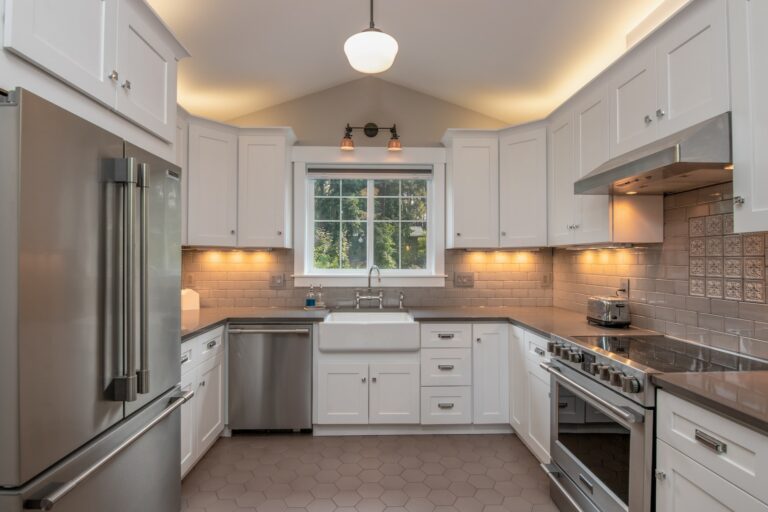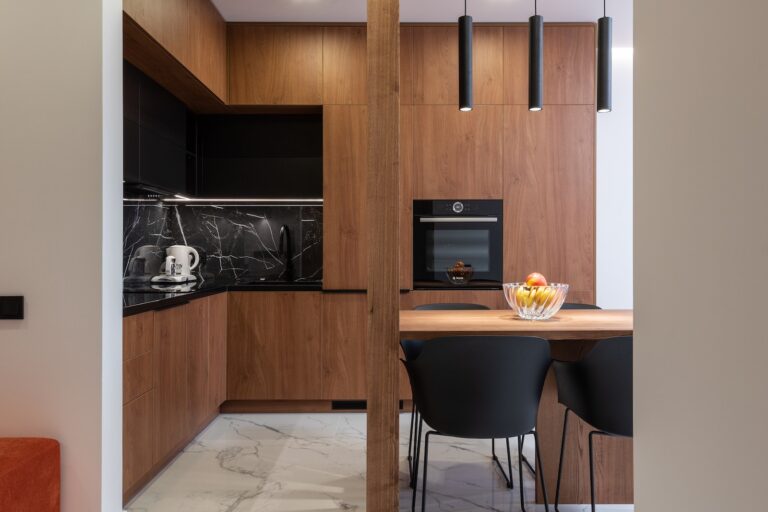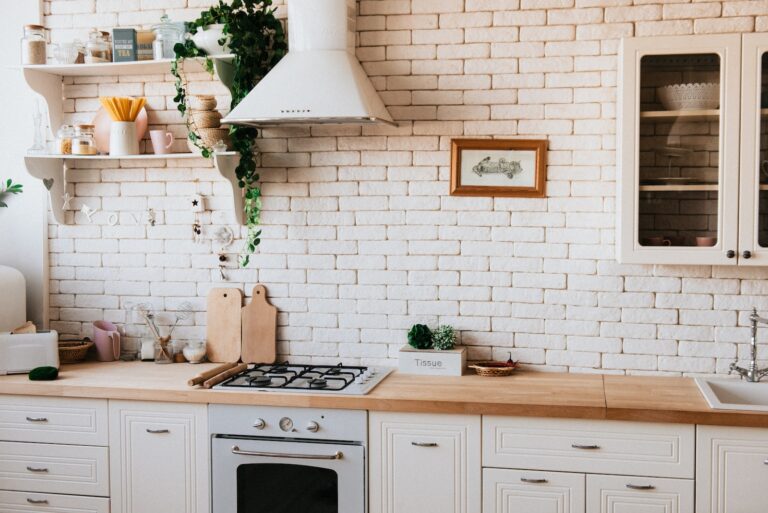How To Plan Kitchen Cabinet Layout?
Are you planning a kitchen renovation and feeling overwhelmed by the task of designing your cabinet layout? Don’t worry, you’re not alone! The kitchen is the heart of the home, and designing a functional and aesthetically pleasing cabinet layout is crucial. In this article, we’ll provide you with tips and tricks on how to plan your kitchen cabinet layout like a pro, so you can create a space that is both beautiful and practical. So, let’s get started!

How to Plan Kitchen Cabinet Layout?
Planning the layout of your kitchen cabinets is a crucial step in creating your dream kitchen. A well-designed cabinet layout ensures that your kitchen is functional, organized, and aesthetically pleasing. Whether you are remodeling your kitchen or building a new one, this article will guide you through the process of planning your kitchen cabinet layout.
1. Evaluate Your Storage Needs
Before planning your kitchen cabinet layout, evaluate your storage needs. Take stock of your kitchen appliances, cookware, and utensils, and determine how much storage space you will require. Consider how often you use each item and how accessible you want them to be. Additionally, think about any future storage needs, such as a growing family or new kitchen gadgets.
Once you have determined your storage needs, consider the types of cabinets you require. Base cabinets provide floor-level storage and are ideal for heavy items, while wall cabinets offer overhead storage and are perfect for lighter items. Tall cabinets are excellent for storing larger items such as brooms, mops, and pantry items.
2. Choose Your Cabinet Style
Cabinet styles can set the tone for your kitchen design. Choose a style that complements your kitchen’s aesthetic and suits your personal taste. Some popular styles include traditional, modern, and shaker-style cabinets.
Traditional cabinets feature ornate details and decorative molding, while modern cabinets offer clean lines and minimalist designs. Shaker-style cabinets are a timeless design that can work well in any kitchen. Consider the color and finish of your cabinets as well. Lighter finishes can make a smaller kitchen feel more spacious, while darker finishes can create a cozy and inviting atmosphere.
3. Decide on Cabinet Configuration
The configuration of your cabinets can determine the flow and functionality of your kitchen. Popular configurations include a U-shaped, L-shaped, or galley style kitchen. U-shaped kitchens offer ample storage and counter space and are ideal for larger kitchens. L-shaped kitchens are popular in smaller kitchens, as they offer a more open layout. Galley-style kitchens offer a narrow layout with cabinets and appliances on either side.
Once you have decided on your cabinet configuration, consider the placement of your cabinets. Place frequently used items in easily accessible locations, and store infrequently used items in harder-to-reach areas.
4. Consider Cabinet Accessories
Cabinet accessories can enhance the functionality of your kitchen. Consider incorporating pull-out shelves, lazy susans, and drawer organizers into your cabinet design. These accessories can help maximize your storage space and make it easier to access your kitchen items.
5. Plan Your Appliance Placement
Your appliance placement can impact your cabinet layout. Consider the size and location of your appliances when designing your cabinet layout. Place your refrigerator, stove, and sink in a triangle formation, as this will ensure easy access and efficient workflow.
6. Determine Your Budget
Your budget will determine the type and quality of cabinets you can purchase. Consider the materials, finishes, and accessories you require and allocate your budget accordingly. Remember to factor in installation costs and any additional expenses, such as plumbing or electrical work.
7. Hire a Professional
Consider hiring a professional to assist you with your cabinet layout. A kitchen designer or contractor can offer expert advice and ensure that your cabinet layout is functional, aesthetically pleasing, and within your budget.
8. Installation
Once you have designed your cabinet layout, it’s time to install your cabinets. Proper installation is crucial for ensuring that your cabinets are safe, functional, and long-lasting. Consider hiring a professional for installation, as they have the necessary tools and expertise to ensure that your cabinets are installed correctly.
9. Maintenance
Proper maintenance is essential for ensuring that your cabinets remain in good condition. Clean your cabinets regularly with a mild cleaning solution, and avoid using harsh chemicals or abrasive materials that can damage the finish. Additionally, check your cabinets regularly for any signs of wear or damage and address any issues promptly.
10. Benefits of Proper Cabinet Layout
A well-designed cabinet layout can offer numerous benefits. It can enhance the functionality of your kitchen, make it easier to access your items, and improve the overall aesthetic of your space. Proper cabinet layout can also increase the value of your home, making it a worthwhile investment for any homeowner.
In conclusion, planning your kitchen cabinet layout requires careful consideration of your storage needs, cabinet style, configuration, appliance placement, and budget. By following these steps and hiring a professional if necessary, you can create a functional, organized, and visually appealing kitchen that meets your needs and exceeds your expectations.
Frequently Asked Questions
Planning the layout of kitchen cabinets can be a daunting task, especially if you’re doing it for the first time. Here are some commonly asked questions about how to plan your kitchen cabinet layout.
What factors should I consider when planning my kitchen cabinet layout?
When planning your kitchen cabinet layout, there are several factors you should consider:
1. Your cooking style and habits: Do you need more storage space for pots and pans? Do you prefer to have your spices and utensils within easy reach?
2. The size and shape of your kitchen: A large kitchen may allow for an island or a pantry, while a smaller kitchen may require more space-saving solutions.
3. Your budget: Custom cabinetry can be expensive, so you may need to weigh your options and prioritize your needs.
4. Your personal style and taste: The design and color of your cabinets should reflect your personal style and complement the overall aesthetic of your home.
What are some popular kitchen cabinet layout designs?
There are several popular kitchen cabinet layout designs:
1. U-shaped: This layout provides ample storage and counter space and is ideal for larger kitchens.
2. L-shaped: This layout is suitable for smaller kitchens and provides an efficient work triangle between the sink, stove, and refrigerator.
3. Galley: This layout features two parallel walls and is ideal for smaller kitchens with limited space.
4. Island: This layout features a standalone island that can provide additional storage and counter space.
How do I measure my kitchen for cabinet layout?
Measuring your kitchen for cabinet layout can seem daunting, but it’s not as complicated as it seems. Here are some steps to follow:
1. Measure the length of your walls: Measure the length of each wall in your kitchen where you plan to install cabinets.
2. Measure the height of your ceiling: Measure the height of your ceiling from the floor to the ceiling.
3. Measure the width and height of windows and doors: Measure the width and height of any windows and doors in your kitchen.
4. Sketch your kitchen: Draw a rough sketch of your kitchen, including the measurements you’ve taken and the location of windows and doors.
How do I choose the right cabinet materials?
Choosing the right cabinet materials is essential for both functionality and aesthetics. Here are some popular cabinet materials to consider:
1. Wood: Wood cabinets are durable and come in a variety of finishes and styles.
2. Laminate: Laminate cabinets are affordable and easy to clean, making them ideal for busy kitchens.
3. Metal: Metal cabinets are sleek and modern, but may not be as durable as wood or laminate.
4. Glass: Glass cabinets can add a touch of elegance to your kitchen, but they may require more maintenance than other materials.
What should I consider when choosing cabinet hardware?
Cabinet hardware can add the finishing touch to your kitchen cabinets. Here are some factors to consider when choosing cabinet hardware:
1. Style: Choose hardware that complements the style of your cabinets and the overall aesthetic of your kitchen.
2. Functionality: Consider how easy the hardware is to use and whether it will hold up over time.
3. Finish: Choose a finish that complements the color and style of your cabinets.
4. Budget: Cabinet hardware can be expensive, so consider your budget when choosing hardware.

A kitchen layout design guide [Where to start]
In conclusion, planning a kitchen cabinet layout can be a challenging task, but with proper planning and organization, it can also be an exciting and rewarding experience. By considering the size of your kitchen, your cooking habits, and your storage needs, you can design a layout that not only looks great but also functions efficiently.
Remember to take your time and consider all your options before making any final decisions. Consider consulting with a professional kitchen designer or contractor to ensure that your layout is optimized for your specific needs. With the right layout, you can create a kitchen that is both beautiful and functional, making your cooking and entertaining experiences more enjoyable than ever before.
So, take the first step towards your dream kitchen by starting with a well-planned cabinet layout. With careful consideration and attention to detail, you can create a kitchen that truly reflects your style and meets all your storage and organizational needs.






